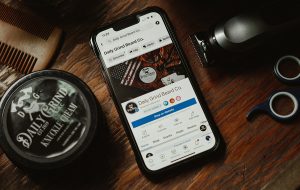Dark Social and Its Impact on Marketing: Strategies for Tracking and Utilizing Private Sharing

Dark social, a term coined by Alexis C. Madrigal, refers to the practice of sharing content through private channels such as messaging apps, email, and text messages, making it challenging for marketers to track and attribute this activity. In today’s digital landscape, dark social represents a significant portion of online sharing, impacting marketing strategies and analytics.
Understanding the implications of dark social is crucial for marketers aiming to comprehensively track and analyze their content’s reach. As traditional social media analytics fall short in capturing private sharing, marketers are faced with the challenge of accurately measuring their content’s performance and optimizing their strategies to account for this hidden sharing behavior.
This blog post delves into the world of dark social, exploring its relevance in modern digital marketing and the complex nature of tracking and leveraging private sharing. By addressing the challenges and opportunities presented by dark social, marketers can develop effective strategies to harness the power of private sharing and enhance their overall marketing efforts.
Understanding Dark Social
Understanding Dark Social is crucial for marketers in the digital age. It encompasses the hidden, untraceable sharing of content through private channels such as messaging apps, email, and secure social networks. Unlike public social media posts that can be tracked through shares and likes, dark social leaves no referral data, making it challenging for marketers to attribute the source of website visits and conversions accurately.
Characteristics of Dark Social
Dark social is characterized by its private nature, as it occurs outside of public platforms where referrals can be tracked. It thrives in one-on-one conversations, group chats, and closed networks, making it challenging for marketers to track sharing behavior accurately. Additionally, the lack of referrer data means that when content is shared through dark social channels, it appears as direct traffic in analytics reports, masking its true origin.
Impact on Traditional Analytics
The impact of dark social on traditional analytics is significant. As a considerable portion of content sharing occurs through private channels, traditional web analytics tools often misattribute traffic, leading to an inaccurate representation of the true sources of website visits and conversions. Marketers may erroneously interpret dark social traffic as direct traffic, undermining the effectiveness of their marketing efforts and distorting the picture of audience engagement.
By understanding the characteristics of dark social and its impact on traditional analytics, marketers can implement strategies to track and leverage this hidden form of sharing more effectively. Stay tuned for the subsequent section, where we explore actionable strategies for tracking and utilizing dark social in your marketing endeavors.
Challenges in Tracking Dark Social
In the world of digital marketing, the phenomenon of dark social presents a unique set of challenges. Marketers often struggle to track and measure the impact of private sharing due to technological limitations and privacy concerns. Here’s a closer look at the obstacles faced in capturing and leveraging dark social data.
Technological Limitations
Traditional analytics tools have their limitations when it comes to tracking dark social. Unlike public social platforms where sharing and engagement are easily traceable, private sharing through methods like messaging apps, email, and secure browsing renders conventional tracking methods ineffective. This creates a blind spot for marketers, making it difficult to accurately attribute web traffic and conversions to their original sources.
Privacy Concerns
The ethical considerations and privacy implications surrounding the monitoring of dark social are a pressing issue for marketers. While tracking user behavior and interactions can provide valuable insights for campaign optimization, the invasion of private communication raises ethical questions. Marketers must navigate the delicate balance between gathering actionable data and respecting user privacy. Failure to do so can lead to a breach of trust and potentially damage brand reputation.
Navigating the complexities of dark social tracking requires a nuanced approach that respects user privacy while seeking to understand and leverage the impact of private sharing. As marketers strive to bridge the gap between technological limitations and ethical considerations, innovative strategies and tools are emerging to shed light on the elusive world of dark social.
Strategies for Tracking and Utilizing Dark Social
In today’s digital landscape, effectively tracking and utilizing dark social activity can significantly enhance a brand’s marketing strategies. By implementing the right tools, encouraging transparent sharing, leveraging UTM parameters and shortened URLs, and creating unique content tailored for private sharing, marketers can tap into the hidden potential of dark social. Let’s delve into actionable tactics and best practices for effectively tracking and leveraging dark social sharing in marketing strategies.
Implementing Dark Social Analytics Tools
To capture and analyze dark social sharing, marketers can employ specialized tools and techniques designed to uncover private sharing patterns. These tools utilize unique tracking parameters and dedicated platforms to uncover otherwise hidden referral traffic. By partnering with these analytics providers, marketers gain the ability to identify private shares, measure their impact, and optimize future strategies accordingly.
Encouraging Transparent Sharing
Encouraging transparent sharing involves providing users with easy sharing options and incentives for public engagement. Marketers can make use of clear call-to-action buttons and social sharing icons on their content, minimizing barriers to public sharing. Additionally, offering rewards or exclusive access in exchange for public sharing can motivate users to transition their private shares into public engagement.
Leveraging UTM Parameters and Shortened URLs
By integrating UTM parameters and shortened URLs in their marketing campaigns, brands can gain insights into private sharing activities. These tracking methods allow marketers to attribute private shares to specific campaigns and content, providing valuable data for refining marketing strategies and measuring the impact of dark social on overall performance.
Utilizing Unique Content for Private Sharing
Creating exclusive or personalized content can entice users to engage in private sharing. Marketers can craft content that resonates deeply with specific audience segments, making it more likely to be privately shared among closely-knit circles. By analyzing the performance of such content, brands can refine their approach to accommodate the dynamics of dark social sharing.
Incorporating these strategies into marketing initiatives empowers brands to uncover the concealed realm of dark social and harness its potential to drive meaningful engagement and conversions. As marketers continue to adapt to the evolving digital landscape, mastering the art of tracking and utilizing dark social remains pivotal for sustaining a competitive edge in the realm of online marketing.
Takeaways
Dark social presents both a challenge and an opportunity for businesses aiming to refine their marketing strategies. As private sharing continues to dominate online content sharing, marketers must acknowledge the importance of addressing this hidden traffic source. By effectively tracking and utilizing private sharing, businesses can gain valuable insights into consumer behavior, preferences, and interests that may otherwise remain obscured. This enables them to adapt their marketing strategies to better resonate with their audience, leading to enhanced brand visibility, increased conversions, and ultimately, improved ROI.
Embracing the Potential Benefits
Embracing the potential benefits of effectively tracking and utilizing private sharing can provide businesses with a competitive edge in the digital landscape. By deciphering the patterns and content preferences of private shares, businesses can tailor their marketing initiatives to align with the specific needs and interests of their audience. This personalized approach fosters deeper connections with consumers, leading to increased brand loyalty and word-of-mouth referrals.
Overcoming the Challenge
Overcoming the challenge of dark social requires a proactive stance and the implementation of innovative tracking tools and strategies. By leveraging advanced analytics and attribution models, businesses can gain a clearer understanding of the impact of private sharing on their marketing efforts. This enables them to allocate resources more effectively, refine content strategies, and maximize the reach and impact of their campaigns.
The Road Ahead
As businesses navigate the ever-evolving digital landscape, the ability to adapt to emerging trends such as dark social is pivotal for sustained success. Finding creative ways to engage with private shares and harness their potential for brand amplification will be a game-changer in the marketing arena. By embracing the complexities of dark social and integrating them into their strategies, businesses can unravel new opportunities and establish a seamless connection with their audience.
In conclusion, the acknowledgment and strategic utilization of dark social can propel businesses towards a more comprehensive and insightful marketing approach, ultimately shaping a more robust and resilient brand presence in the fast-paced digital world.









